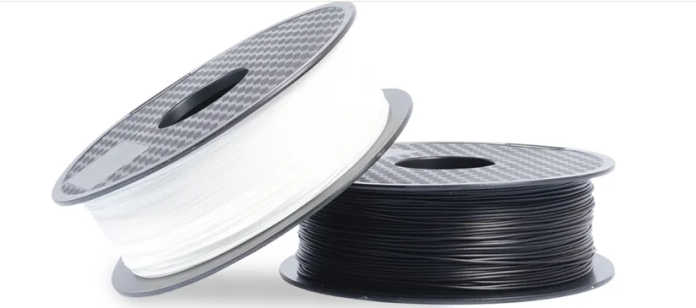The natural thermoplastic polyester, known as Polylactic Acid (PLA) filament, is recyclable and made from renewable materials like sugar cane or maize starch. Under specific circumstances, the filament’s high heat capacity and great mechanical strength make it biodegradable. In addition, it is non-toxic and does not release fumes or poisons when melted.
WHAT CAN 1Kg PLA Filament BE USED FOR?
For many people who are just beginning their 3D printing experience, PLA is an accessible material. It may be bought in filament form for a reasonable price and can be printed at low temperatures without the need for heated build surfaces or a regulated environment.
However, PLA Filament has poor heat resistance compared to other 3D printing materials and may not be strong enough to meet the mechanical demands of your application. For less demanding applications, PLA Filament parts might work well, but they should be carefully assessed when higher functionality is needed.
What is the purpose of the best PLA Filament?
Due to the fact that the best PLA filament could be created at a low cost using renewable resources, it soon gained popularity as a material. In the shape of wire on a spool, PLA plastic material is fed into the extruder head, where it melts and is continuously extruded onto the printing tray. While spools of colored filament can be used to create items in a variety of hues, this material is translucent in its natural state.
This material has better geometric stability during manufacturing since it shrinks less after cooling than ABS. Moreover, since the best PLA Filament may be used for rapid prototyping, it can be helpful for your product development.
The main benefit of the best PLA Filament that Snapmaker offers is large-scale 3D printing, which can be quite useful for various applications. For example, with the help of a large 3D printer, this material gives you the option to manufacture professional pieces.
This 3D printing filament is a cost-effective and adaptable material. It is simple to utilize for end-use, tooling, prototype, and pattern-making purposes. However, there are still certain drawbacks, such as photodegradation, which happens when PLA Filament is exposed to sunshine and is brought on by UV radiation.
We want to inform you that applications requiring suitability with high humidity (more than 98%) or high temperatures (over 60°C) are not suitable for this material. First, evaluate the PLA Fimalent 3D printing material’s physical and mechanical characteristics.
Disadvantages of best PLA Filament
- If not in a controlled setting, it decomposes slowly (it will decompose in three months with specific composting conditions, otherwise could take between 100-1,000 years)
- The world’s expanding population raises the problem of whether it’s ethical to spend entire crops of corn, for example, in creating bioplastics, rather than feeding the population in need.
- It heavily relies on the use of transgenic crops, with concerns around the rise in monoculture and the lack of long-term testing.
- It can contaminate the recycling process when combined with conventional plastics.
- Unless it is blended with less eco-friendly polymers, PLA Filament will behave in a brittle manner.
- Bioplastics like PLA Filament lack the strength and crystallinity of polymers made from petroleum Read more


